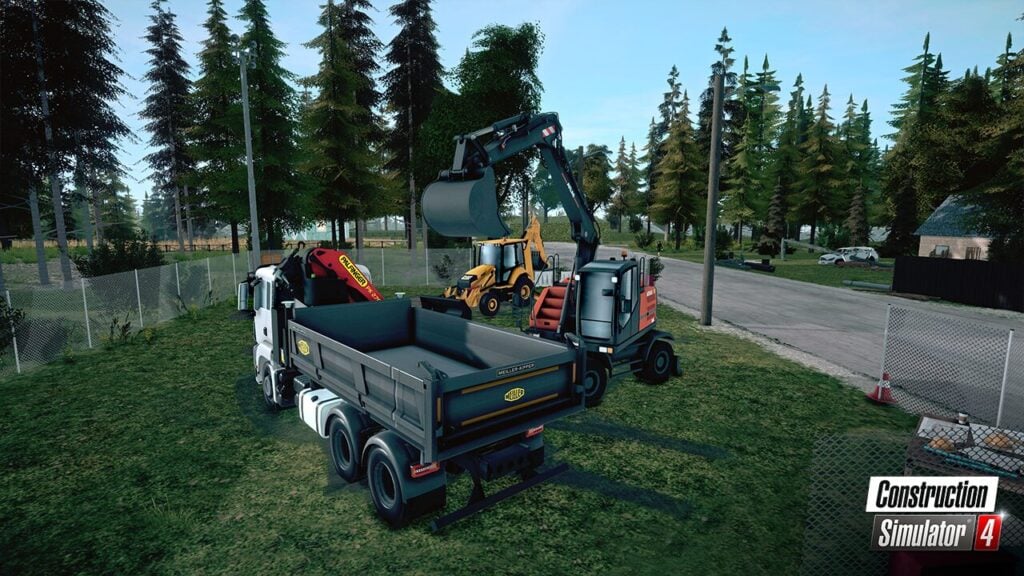In the thrilling world of extraction shooters, Exoborne stands out by elevating the classic "get in, get the loot, and get out" formula with the introduction of super-powered Exo-Rigs, dynamic weather effects, and the exhilarating use of grappling hooks. After spending around 4-5 hours at a recent preview event, I left with a sense of anticipation for its potential impact on the genre, though not quite craving another immediate dive into the action.
The core of Exoborne's distinctiveness lies in its Exo-Rigs. These advanced suits come in three varieties: the Kodiak, which offers a shield during sprints and the ability to unleash massive splash damage from above; the Viper, which boosts health regeneration upon eliminating foes and delivers powerful melee attacks; and the Kestrel, which prioritizes mobility with higher jumps and temporary hovering capabilities. Each rig can be further customized with unique modules that enhance their inherent abilities. While swinging into battle Spider-Man-style with the Kodiak’s ground slam was particularly satisfying, the limited selection of just three rigs hints at room for expansion. Developer Shark Mob remained tight-lipped about future additions, but the potential for more diverse Exo-Rigs is certainly there.
When it comes to the shooting mechanics, Exoborne delivers a robust and enjoyable experience. The guns feel weighty and pack a satisfying kick, while melee attacks are impactful and exhilarating. Utilizing the grappling hook to glide across the map adds a thrilling dimension to navigation, and unpredictable weather events further influence gameplay. Tornados can propel you across the map, enhancing your aerial mobility, whereas heavy rainfall can render parachutes nearly useless. The post-apocalyptic setting is accentuated by the presence of fire tornadoes, which, while beneficial for movement, pose a lethal risk if you venture too close.
Risk vs. Reward
The essence of Exoborne is encapsulated in its risk versus reward dynamics. Upon entering the game, players face a 20-minute countdown, after which their location is revealed to all. This initiates a tense 10-minute window to extract, or face immediate termination. Players can opt to leave early with their loot, but staying longer increases the potential rewards. Loot is scattered throughout the map, found in containers, on AI enemies, and most enticingly, on other players, offering the chance to seize their accumulated gear.
Among the treasures, artifacts stand out as high-value targets. These are essentially loot boxes requiring artifact keys to unlock, and their locations are visible to all, inevitably leading to intense player confrontations. Additionally, the map features high-value loot zones heavily guarded by formidable AI, challenging players to risk more for greater rewards.
The game fosters a tense atmosphere that encourages effective squad communication. Even if downed, players aren't out of the fight; self-revives can bring you back, and teammates can resurrect you if they reach your body in time. This mechanic adds a layer of strategy and teamwork, though it's risky if enemy squads are nearby.
My time with Exoborne raised two significant concerns. Firstly, the game seems best enjoyed with a dedicated group of friends, which could be a barrier for solo players or those without a regular gaming squad. This issue is compounded by the fact that Exoborne is not free-to-play. Secondly, the late-game content remains a mystery. While Game Director Petter Mannefelt hinted at a focus on PVP and player comparisons, specifics were not disclosed. The PVP elements I experienced were engaging, but the intervals between encounters felt too lengthy to make it a compelling draw on its own.
As Exoborne gears up for its playtest from February 12 to 17 on PC, the gaming community eagerly awaits further developments. With its unique mechanics and high-stakes gameplay, Exoborne has the potential to make a significant impact on the extraction shooter genre.

 Latest Downloads
Latest Downloads
 Downlaod
Downlaod




 Top News
Top News








